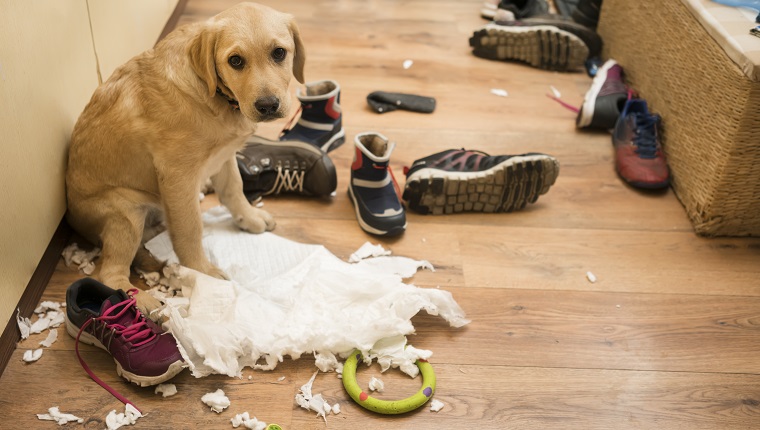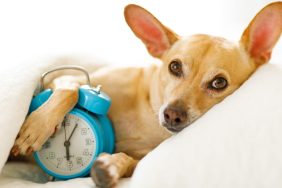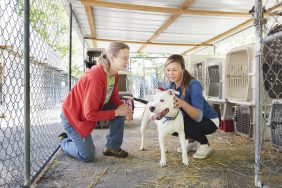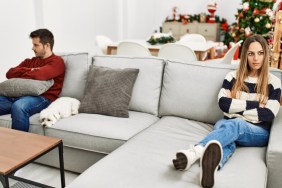You’ve probably seen the “guilty look” from your dog, or maybe you’ve seen one of the countless guilty dog memes or viral videos online. But what does that guilty look mean? Are dogs actually ashamed of their behavior when they look like that?
On an average day, you probably get home and see your dog. They bound cheerfully to you, full of wags and wiggles. You talk to them and give them lots of love. Your dog knows this sequence and expects this greeting and attention when you walk in.
Now, let’s say that, on a certain day, your dog gets a little bored and decides to have a treasure hunt while you’re gone. You arrive home to find your chewed shoes strewn about, and Fido sitting in the corner.
What do you do? The average dog parent lets out a big “HUFF,” following it up with a “you’ve been quite the naughty dog,” lecture. Your dog turns their head down and looks up with that classic guilty face. But what are they actually thinking?
Dogs Know Something Is Wrong
Think of the difference between your body language during your lecture and during an average daily greeting or interaction. You are using a different tone of voice, moving erratically, giving very stern looks, and not touching your dog as you normally do.
Your dog looks at you and sees and very different individual than they see on an average day, which tells your dog that something is askew. They may slink away from you, tuck their tail, drop their ears, and give you whale eye.
They know you’re not your typical, chirpy-cheery self, and they’re offering you body language to let you know they’re a bit confused and threatened. Your dog is trying to calm you and to avoid any further conflict.
People, often mistake these very normal body language offerings as “guilt.” By doing so, we are making assumptions that the dog is admitting to some wrong-doing and feeling ashamed with getting busted.
There’s nothing to prove this though.
Dogs May Make A Connection, But It’s Likely Not Guilt

To assume your dog is making a connection between you being angry with garbage on the floor and them putting it there is actually quite a stretch.
Logically think about why a dog would understand that garbage on your floor is wrong. Do you think your dog understands the expense of your flooring, germs, and the value you place on your time cleaning it up?
Those are all things that would make a human feel a sense of wrongdoing — or at least recognition of putting someone else out. Assuming your dog can work through a situation like this would mean dogs are capable some pretty high-order thoughts and feelings.
They’d have to connect your reaction to the physical reason you’re upset — the mess. Then they’d have to connect the mess to their own past behavior and put it all together to realize that their behavior caused your reaction.
Then, after all of that, they’d have to feel badly that they behaved in a way that caused a situation that caused you to be angry — that an action that they’re no longer performing is the source of your frustration — and finally perform body language to express those feelings of remorse to you.
Human children — and even many adults — struggle to make all of those complex connections and feel guilt or shame about what they’ve done.
Maybe dogs can put that all together; however, there’s no research to support this.
Dogs Who Aren’t Guilty Still Look Guilty
The video above perfectly exemplifies that dogs’ guilty looks are likely only a response to our reactions. There are two dogs in the video. One is guilty; the other is not. Why is the Dalmatian then offering a “guilty” look?
Watch the video twice. The Dalmatian slinks toward the camera, offers a stretch — a dog calming mechanism — lies down, yawns, licks his lips, and offers a head turn. So, was he a conspirator, or is he just responding to the human being upset?
The dog who made the mess is then targeted. The camera comes closer, and the dog continues to offer soft eye blinks and a drooped head. The dog is reacting to the human’s challenging body posture and voice; he’s not acting guilty.
Both dogs demonstrate “guilty” behaviors, but only one of them could be the perpetrator. This suggests they are both reacting to their human’s reaction.
‘Guilty’ Dogs Look An Awful Lot Like Confused Or Fearful Dogs
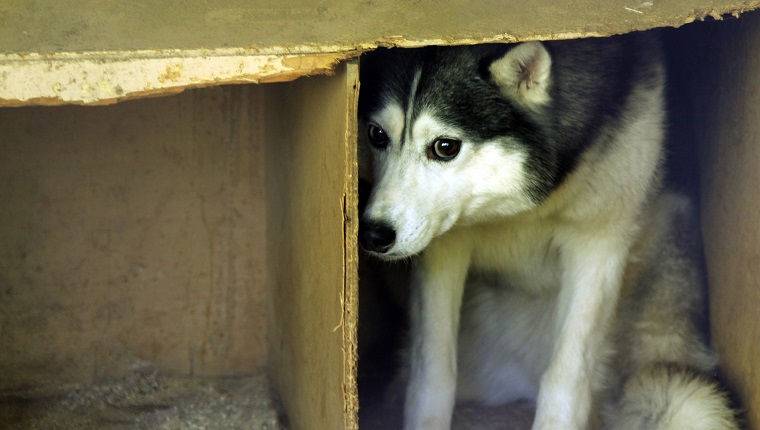
Let’s take another couple of examples.
Let’s say there’s a heap of clothes in your laundry room, and you react the same way to this chore. Your dog would likewise offer that very same body language.
“Huff! I don’t want to do this laundry! Darn kids. All they do is pile on piece after piece! This house is busier than laundromat!”
In this case, you’re simply talking aloud or commiserating with your dog, but they don’t know that. They may slink off again. Unless you have an overly fashionable dog, they’re not guilty of making the laundry pile. So why would they slink off in a “guilty” way?
Again, they just understand that something is off kilter, and you’re not happy.
A frightened dog in a shelter looks very similar to a “guilty” dog. Do we assume they’re carrying continued guilt from tearing up the couch, and that’s what landed them in the shelter?
No. Most people would simply recognize the dog is offering fearful and confused body language. That dog’s body language is the same as a guilty dog. Why?
Because the “guilty” dog is not acting or feeling guilty; rather, they’re feeling nervous, confused, and frightened by humans’ gestures.
Don’t Project Your Own Feelings Onto Your Dog
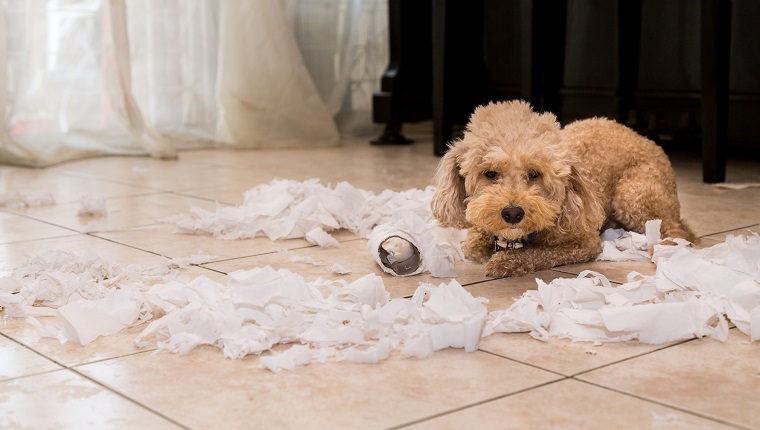
When assuming dog looks guilty, we’re merely projecting human feelings onto them by context of the situation when, in actuality, our dogs are likely reacting to our reactions.
We’ve conditioned them to understand our happy-go-lucky postures and greetings, as well as our angered and frustrated ones. Research points only that far.
So, the next time your dog has a housetraining mistake, tips your garbage can over, or digs an organic dessert from the cat’s litter box and gets caught, just remember they’re not admitting any wrong-doing, or feeling ashamed. They’re simply reacting to your anger or frustration.
In these cases, the only one who should be reprimanded as “naughty” for chewed shoes, housetraining accidents, and the very long list of other doggy domestic mishaps is the person who opted to not train or crate their exploratory dog, leaving them free to find household chewing hazards and make mistakes.
Now who has the guilty look?
Has your dog ever given you a guilty look? Do you think dogs feel guilt, or are they just reacting to their humans? Let us know in the comments below!
